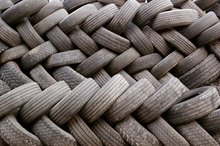Harvested wheat and oat plants produce straw. The straw itself does not cause allergies. The problem arises from the straw dust and stray weeds within the straw. People who are sensitive to extrinsic allergens, which means causes that originate from outside of the body, should avoid areas with has straw dust concentration.
If you are experiencing serious medical symptoms, seek emergency treatment immediately.
Extrinsic Allergens
Straw dust is an extrinsic allergen that enters the body through breathing and enters the lungs. The body's natural defense system is triggered because it cannot fight off the foreign body of straw dust. A chemical reaction occurs in the lungs that causes and inflammation. This inflammation in the lungs is called sensitization.
- Straw dust is an extrinsic allergen that enters the body through breathing and enters the lungs.
- A chemical reaction occurs in the lungs that causes and inflammation.
What Causes Straw Dust Allergies?
Bird Allergy Symptoms
Learn More
A straw dust allergy is caused by a very intense or prolonged exposure. The dust collects in the lungs until the body can no longer fight off the intrusion. These dust particles are 5 microns or smaller and are absorbed by the alveoli within the lungs. The alveoli react due to a toxin contained within the straw dust.
- A straw dust allergy is caused by a very intense or prolonged exposure.
- These dust particles are 5 microns or smaller and are absorbed by the alveoli within the lungs.
Symptoms
Individuals with a straw dust allergy will have one of three responses. A sub-acute or recurrent response will cause:
- the individual to have a cough
- shortness of breath
- sore throat
- nausea
- sweating
- headache
A chronic or long-term response will cause an individual to have shortness of breath, weight loss, occasional fever, lack of energy. This individual may develop permanent lung damage and possibly death.
Reducing Straw Dust Allergens
Side Effects of Mold Inhalation
Learn More
Reducing the straw dust allergens in a home or business can be done through the use of general ventilation, local exhaust ventilation, process isolation and process enclosure. On farms it is important to control dust cloud formation by using an enclosed conveyor system or leakproof ducting. Adequate ventilation with fresh air, proper temperature and proper relative humidity should be maintained within buildings where animals are housed.
Personal Protective Equipment
Individuals with acute or chronic straw dust allergy reaction can wear some type of personal respiratory protection. Paper dust masks are available for purchase along with commercial grade respirators. Before purchasing a commercial grade respirator check to make sure that it is one that will filter straw dust. All respirators are not made the same.
- Individuals with acute or chronic straw dust allergy reaction can wear some type of personal respiratory protection.
- Paper dust masks are available for purchase along with commercial grade respirators.
Related Articles
References
- Nelson HS. Immunotherapy for house-dust mite allergy. Allergy Asthma Proc. 2018;39(4):264-272. doi:10.2500/aap.2018.39.4145
- Kim JY, Rhee CS, Cho SH, Choe G, Kim DY, Han DH. House dust mite sublingual immunotherapy in children versus adults with allergic rhinitis. Published online ahead of print, 2020 Jun 13. Am J Rhinol Allergy. 2020;1945892420931713. doi:10.1177/1945892420931713
- Asthma and Allergy Foundation of America. Dust mite allergy. Updated October 2015.
- Babe KS Jr, Arlian LG, Confer PD, Kim R. House dust mite (Dermatophagoides farinae and Dermatophagoides pteronyssinus) prevalence in the rooms and hallways of a tertiary care hospital. J Allergy Clin Immunol. 1995;95(4):801-805. doi:10.1016/s0091-6749(95)70121-4
- Illinois Department of Public Health. Mites affecting humans.
- Lee E, Lee SY, Park MJ, Hong SJ. TNF-α (rs1800629) polymorphism modifies the effect of sensitization to house dust mite on asthma and bronchial hyperresponsiveness in children. Published online ahead of print, 2020 May 20. Exp Mol Pathol. 2020;115:104467. doi:10.1016/j.yexmp.2020.104467
- Boberg E, Johansson K, Malmhäll C, Weidner J, Rådinger M. House Dust Mite Induces Bone Marrow IL-33-Responsive ILC2s and TH Cells. Int J Mol Sci. 2020;21(11):E3751. Published 2020 May 26. doi:10.3390/ijms21113751
- Weitzel T, Makepeace BL, Elliott I, Chaisiri K, Richards AL, Newton PN. Marginalized mites: Neglected vectors of neglected diseases. PLoS Negl Trop Dis. 2020 Jul 23;14(7):e0008297. doi: 10.1371/journal.pntd.0008297. PMID: 32701946; PMCID: PMC7377360.
- Atta AH, Amer RM, Mesbah AE, Khater MW. Sublingual Versus Subcutaneous Immunotherapy as regards Efficacy and Safety in Respiratory Allergic Patients. Egypt J Immunol. 2019;26(2):65-78.
- American Lung Association. Dust mites. Updated July 1, 2019.
Writer Bio
Kim Blakesley is a home remodeling business owner, former art/business teacher and school principal. She began her writing and photography career in 2008. Blakesley's education, fine arts, remodeling, green living, and arts and crafts articles have appeared on numerous websites, including DeWalt Tools, as well as in "Farm Journal" and "Pro Farmer."








